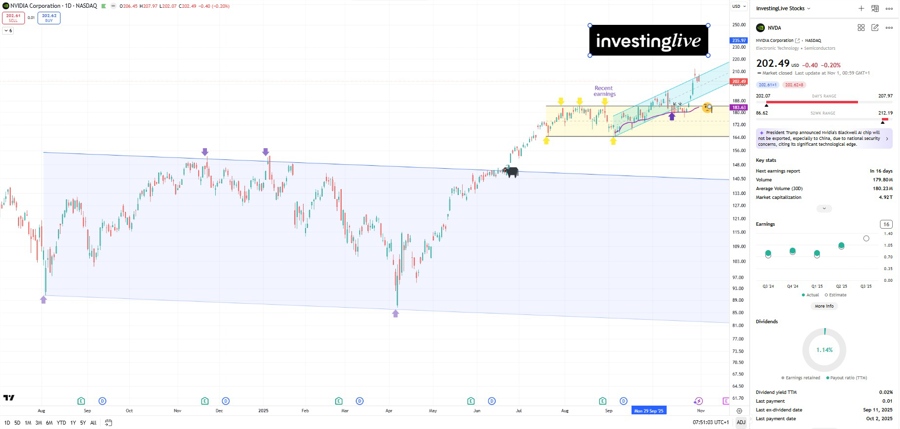Top Stories
Fed Chair Powell Signals AI Boom Isn’t a Dot-Com Bubble

UPDATE: Federal Reserve Chair Jerome Powell has just announced that the current surge in artificial intelligence (AI) spending does not mirror the dot-com bubble of the 1990s. In a pivotal statement, Powell emphasized that today’s AI leaders, including tech giants Microsoft, Alphabet, Amazon, Nvidia, and Meta, are profitable and generating real cash flow, a stark contrast to the speculative environment of the past.
Powell’s remarks come as the AI industry experiences unprecedented growth, with companies like OpenAI reportedly raking in $13 billion in annual revenue, supported by an estimated 30 to 40 million paying users. The productivity revolution driven by AI tools is reshaping how businesses operate, allowing them to achieve more with fewer resources. This productivity shift is being hailed as one of the most significant in history, according to industry experts.
Recent studies indicate that AI implementation in workplaces, such as call centers, has resulted in productivity gains exceeding 10 percent, particularly among newer employees. Furthermore, consulting firms like McKinsey predict that generative AI could inject trillions into the global economy annually.
However, while major AI firms exhibit robust earnings, skepticism remains. Critics warn that many companies adopting AI are still struggling to convert technology investments into consistent profits. The current capital intensity of AI spending raises questions about sustainability, highlighting that not all AI projects will yield the expected returns.
For investors, Powell’s insights reflect a broader reality: while leading AI firms have solid earnings and sustainable business models, caution is advised. The market is rife with speculation, especially in less proven areas of the AI ecosystem. Investors must differentiate between AI spending that delivers immediate value and those relying on future gains.
The implications of Powell’s statement are significant. While he did not explicitly declare an AI bubble, his insights point to a more stable landscape compared to the dot-com era. Yet, market dynamics remain complex. For instance, Nvidia shares are currently hovering around the critical threshold of $200, a psychological level that often influences trading behavior. Investors should remain vigilant, as fluctuations could lead to pullbacks to around $194 or $187.
This situation raises the urgent question: Is the AI boom justified by long-term productivity and ROI, or are we witnessing the early signs of an emerging bubble? The discussion is evolving rapidly, and your perspective is crucial. Share your thoughts in the comments below to engage in this timely conversation on AI spending and its implications for investment strategies.
With the landscape shifting so quickly, staying informed and prepared for what’s next is essential for both investors and industry watchers.
-

 Science3 weeks ago
Science3 weeks agoIROS 2025 to Showcase Cutting-Edge Robotics Innovations in China
-

 Politics3 weeks ago
Politics3 weeks agoJudge Considers Dismissal of Chelsea Housing Case Citing AI Flaws
-

 World3 weeks ago
World3 weeks agoBravo Company Veterans Honored with Bronze Medals After 56 Years
-

 Lifestyle3 weeks ago
Lifestyle3 weeks agoStone Island’s Logo Worn by Extremists Sparks Brand Dilemma
-

 Health3 weeks ago
Health3 weeks agoStartup Liberate Bio Secures $31 Million for Next-Gen Therapies
-

 Health3 weeks ago
Health3 weeks agoTop Hyaluronic Acid Serums for Radiant Skin in 2025
-

 Top Stories3 weeks ago
Top Stories3 weeks agoIndonesia Suspends 27,000 Bank Accounts in Online Gambling Crackdown
-

 World3 weeks ago
World3 weeks agoHoneywell Predicts Record Demand for Business Jets Over Next Decade
-

 Sports3 weeks ago
Sports3 weeks agoMel Kiper Jr. Reveals Top 25 Prospects for 2026 NFL Draft
-

 Lifestyle3 weeks ago
Lifestyle3 weeks agoMary Morgan Jackson Crowned Little Miss National Peanut Festival 2025
-

 Sports3 weeks ago
Sports3 weeks agoYamamoto’s Mastery Leads Dodgers to 5-1 Victory in NLCS Game 2
-

 Science3 weeks ago
Science3 weeks agoArizona State University Transforms Programming Education Approach









